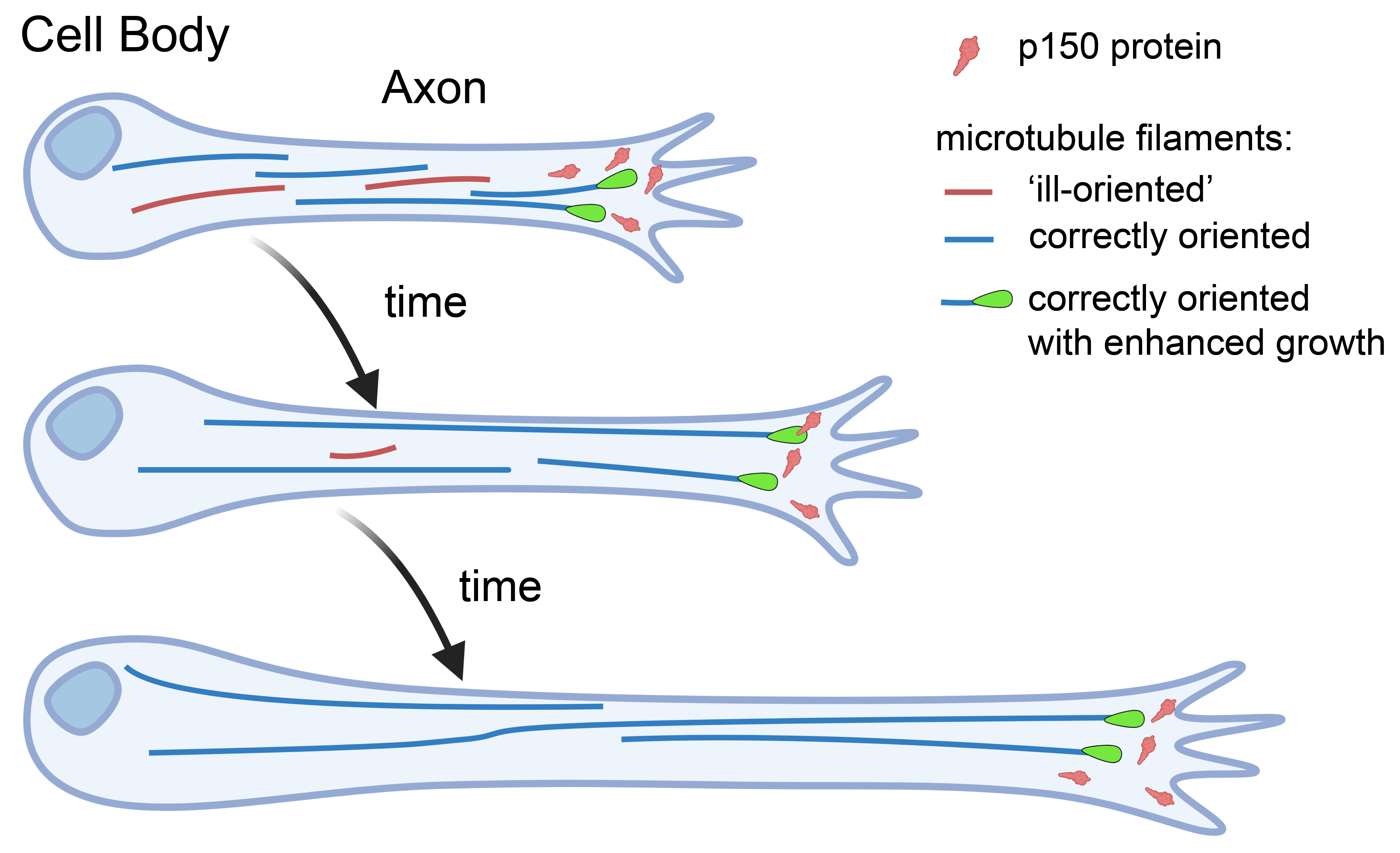Maximilian Jakobs
Microtubule orientation during neuronal development
Keywords: neuroscience, microtubules, modelling, machine learning, image analysis
Neurons, the main components of the brain, exhibit several long slender processes of which the longest, called axon, can extend over several metres in some animals. Most of the protein and other material that the axon needs to survive has to be transported from the neuron’s cell body all the way to the tip of the axon. This is a difficult physical task for axons.
The neuron achieves this amazing long-distance transport by utilising thing long filaments called microtubulesas a ‘road’ system to guide its valuable proteins. These microtubules undergo rapid cycles of growth and shrinkage and must be ‘oriented’ to enable long range transport. Despite 30 years of research, the mechanism that establishes this unique microtubule configuration remained unknown.
In my thesis, I developed machine learning software to automate microscopy image analysis. One of the tools I developed, KymoButler, enabled me to analyse microtubule growth behaviour in fruit fly axons with unmatched precision. I discovered that correctly oriented microtubules grow slightly better than ill-oriented ones. One reason for this growth difference is the protein p150, a protein that accumulates at axonal tips. p150 protein promotes growth of correctly oriented microtubules as they growth towards it (shown in the graphical abstract).
Physical modelling furthermore showed that these small differences have very profound effects on filament lengths so that correctly oriented microtubules become much longer than ill-oriented ones, which are thus likely to disappear. This mechanism likely allows correctly oriented microtubules to prevail and increase in length while ill-oriented microtubules disappear from the axon.
My work paves the way towards a deeper understanding of how microtubules orient during development, a process that happens in many different cells, potentially shedding new light on many neurological pathologies that are characterized by transport deficiencies like Alzheimer’s and Parkinson’s disease.
Max's google scholar and twitter @MAHJakobs
Franze Lab - Department of Physiology Development and Neuroscience


